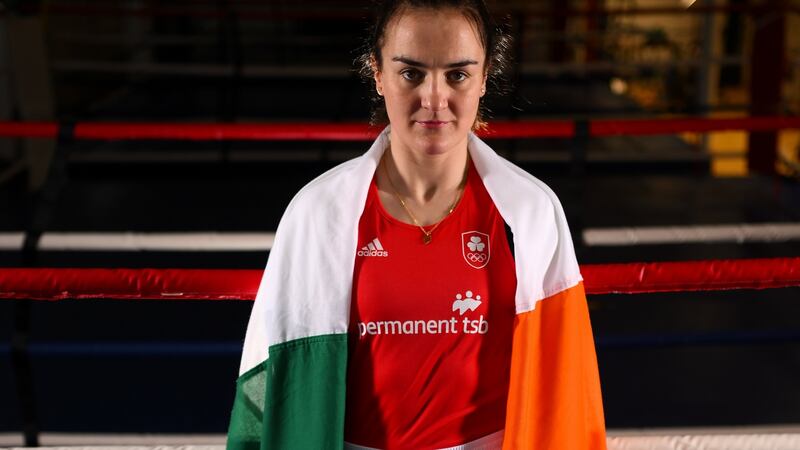Hopelessly lost walking along a street in Jeju, an island off the southern tip of South Korea in the East China Sea, trying to find the Irish boxing team hotel and brief flashes of panic began to set in.
Note to self. Always have a person at the checkout desk write the name and address of the hotel where you are staying in the language of the country you are visiting, in this instance South Korea’s largest island.
But you see a sign in English pointing to a Starbucks so, head in the air scanning, you turn a sharp corner to follow the sign and bump into two people walking in the opposite direction.
Before you can apologise, you realise it is Pete Taylor you have headbutted and knocked on to the road. Beside him is his daughter Katie. The pair are out on one of their hotel bust-out walks. It is 2014 and 27-year-old Katie has won five European titles, four world championships and an Olympic gold medal.
READ MORE
Serendipity. They take pity on the clumsiness and we go for coffee. The point is just one media outlet travelled to Jeju to cover the World Championships because eight years ago women’s boxing, despite its early success almost entirely through Taylor, struggled for purchase in people’s imagination.
It wasn’t uncommon to be wandering solo around Nur-Sultan or Almaty in Kazakhstan or Bucharest or by the banks of the Black Sea in Trabzon covering boxing and Katie Taylor.
Despite the watershed gold medal moment in London 2012, the Irish public were still trying to fit what she was doing in boxing into their own sporting world and even the media had not yet convincingly piled on to the Taylor bandwagon.
Although much admired, the mood was that while those outside of the sport knew the worth of an Olympic gold medal — and it did hugely inflate Taylor’s profile and the public’s interest in her — people were having trouble about where to place her achievements. To quantify how good she was, to figure out who to compare her with in other sports and to answer the question as to whether women should be boxing at all.
Sonia O’Sullivan’s name kept popping up as a hallmark of excellence. The Olympic silver medal winner was the athlete to which all other women in international Irish sport would be compared. Because athletics has a long history, it wasn’t ever an issue for O’Sullivan to have to prove her achievements were credible. Women’s place in athletics had been established many decades before and they had to push hard for it.
But women’s boxing was still in the anteroom waiting for full admission into Irish hearts and minds. It still had some convincing to do, questions to answer.
In some people’s thinking it still does. There has always been some natural antagonism towards the violence of the sport.
At that time, men’s boxing was grabbing attention. Bernard Dunne had become a professional world champion a few years before, beating Ricardo Cordoba in 2009 in Dublin. Kenneth Egan had reached the Olympic final in Beijing. Michael Conlan, Paddy Barnes and John Joe Nevin had all won Olympic medals in London 2012, Nevin also reaching a final.
Joe Ward and Jason Quigley were making it to World Championship finals, while Conlan in 2015 would become the only Irish male European and world champion in amateur boxing.

Seven years on from Conlan’s world title and the cruelty of Rio’s big lie, Taylor has captured world attention with 20,000 in attendance at Madison Square Garden as a professional. She drew 1.5 million pay-for-view subscribers to watch her winning her bout against Amanda Serrano to remain the undisputed lightweight world champion.
Kellie Harrington became a 2018 amateur world champion and 2020 Olympic champion while Lisa O’Rourke and Amy Broadhurst are the newly minted and most recent 2022 world champions.
Bearing in mind the Irish men’s team are currently competing in Armenia at the European Championships and several of them are in a position to win a medal, less than a decade on from the lost traveller in South Korea and women’s boxing has supplanted men’s boxing as the most successful branch of the sport in Ireland.
The speed of the evolution has been extraordinary. Britain did not get any of their six boxers past the quarter-final stage in Istanbul where O’Rourke and Broadhurst won gold.
The sport that had been questioned about its authenticity and depth and continues to be patronised by men and women as being an unfit pastime for female athletes has become the most successful Irish women’s sport in history.
Irish boxing has had a woman world champion almost every year between 2006 and 2022. The only year there was not was between 2016 and 2017.
Taylor lost her 10-year gold medal winning streak at the World Championships in Nur-Sultan in 2016. It then took a year following the disappointment of Rio for her to win her first professional world belt.
She defeated former two-weight world champion Anahi Ester Sanchez for the vacant WBA female lightweight title in October 2017 at the Principality Stadium in Cardiff.
Recently, Harrington could not defend her world lightweight title because of injury. But with O’Rourke and Broadhurst winning gold and Taylor unbeaten as a professional, Ireland has three current world champions and an Olympic champion in women’s boxing.
Bearing in mind where women’s boxing came from a short time ago, that is its inspiration.
















